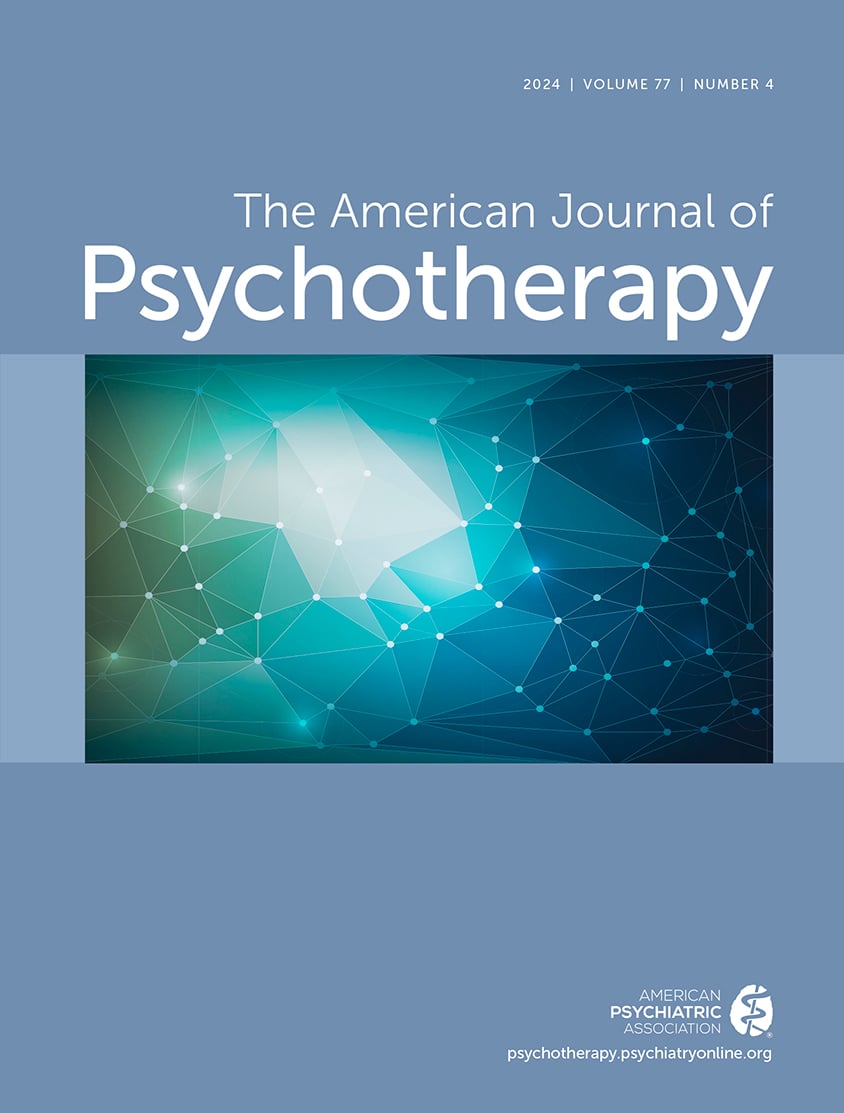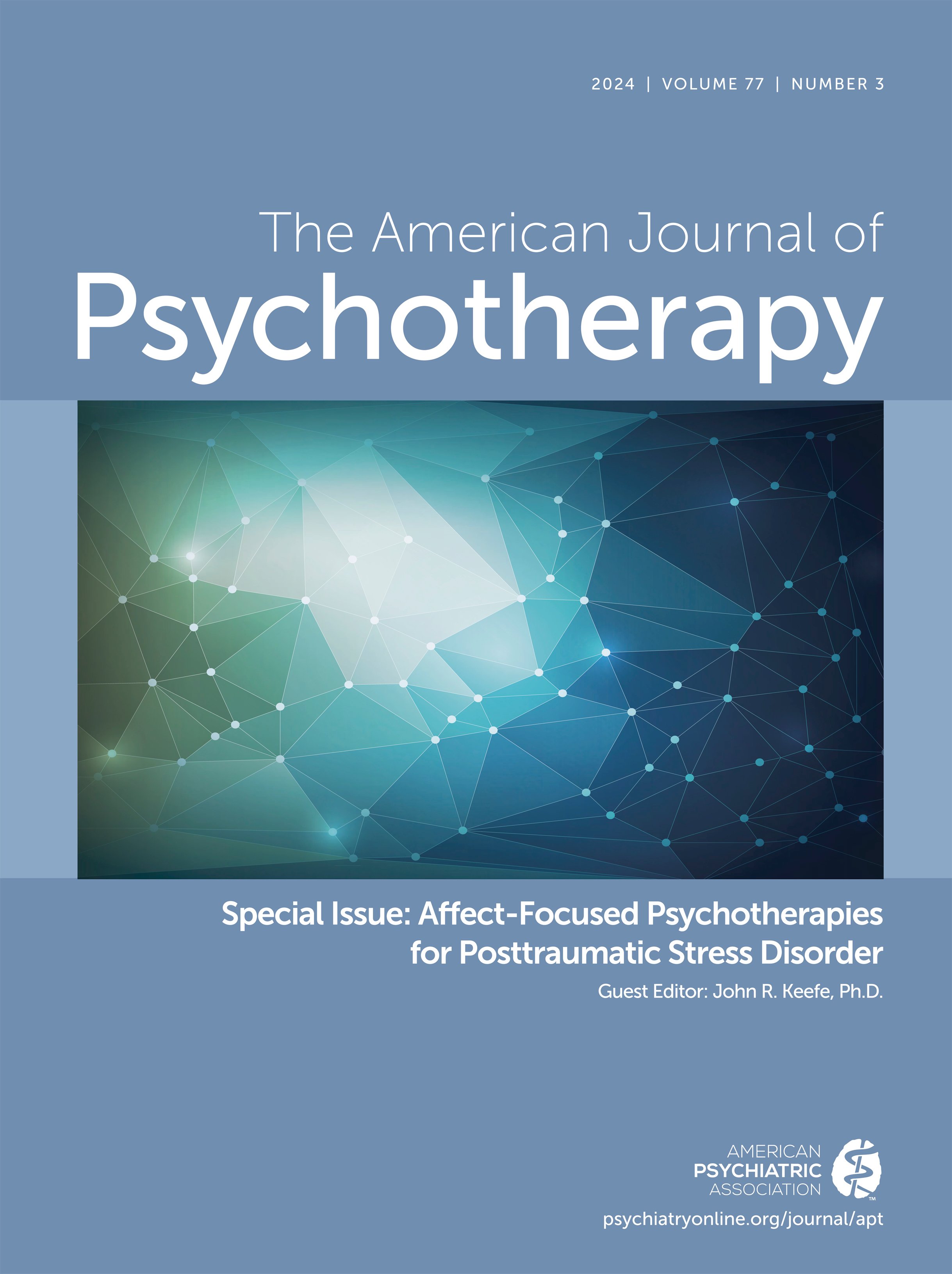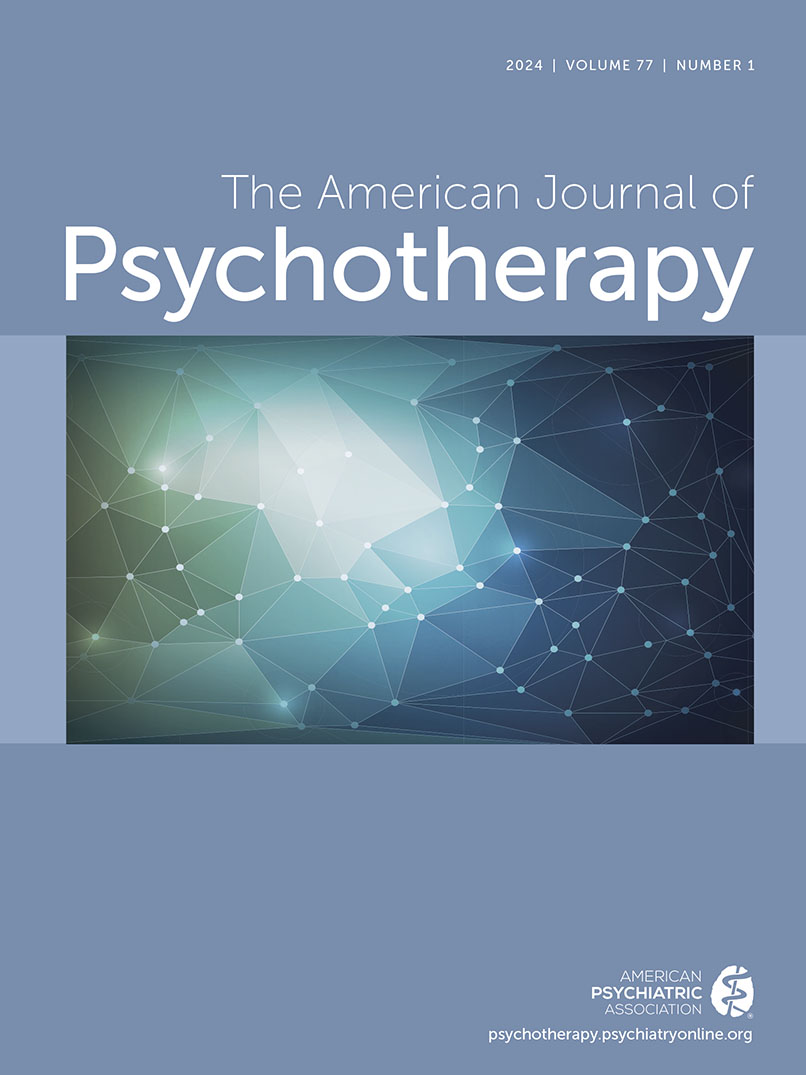American Journal of Psychotherapy
- Volume 42
- Number 4
- October 1988
Editorial
Publication date: 01 October 1988
Pages511–513https://doi.org/10.1176/appi.psychotherapy.1988.42.4.511Articles
Publication date: 01 October 1988
Pages514–520A patient in psychotherapy may vary in his ability to understand the therapist, and to express his thoughts, as he moves from one state of mind to another. Analysis of states of mind is useful, not only in understanding these variations while the patient ...
https://doi.org/10.1176/appi.psychotherapy.1988.42.4.514Publication date: 01 October 1988
Pages521–531The use of self by the therapist, generally referred to as therapist self disclosure, and its potential impact on the therapeutic process, continues to be an important and contentious area of interest and inquiry. In contrast to most research in our field,...
https://doi.org/10.1176/appi.psychotherapy.1988.42.4.521Publication date: 01 October 1988
Pages532–542The important, often neglected factor of choice, learned in childhood, is examined in detail and illustrated by clinical examples. The primary etiological factors in psychopathology of choice are: (1) Too much choice allowed before integration is possible;...
https://doi.org/10.1176/appi.psychotherapy.1988.42.4.532Publication date: 01 October 1988
Pages543–560In the past, mainstream Western mental health professionals tended to ignore or dismiss Asian psychologies. However, in recent years they have attracted increasing attention and growing evidence suggests that we may have underestimated their potential ...
https://doi.org/10.1176/appi.psychotherapy.1988.42.4.543Publication date: 01 October 1988
Pages561–573Written as a guide for those about to begin psychotherapy with a borderline patient, this paper succinctly addresses the early stages of therapy. Because it is most helpful to think in accordance with a conceptual framework, the first section of this ...
https://doi.org/10.1176/appi.psychotherapy.1988.42.4.561Publication date: 01 October 1988
Pages574–584Compulsive shopping and spending, an impulse disorder, form a specific psychodynamic complex with common developmental precursors of pathological narcissism. Compulsive shopping and spending are distinguished from other symptomatic uses of money and ...
https://doi.org/10.1176/appi.psychotherapy.1988.42.4.574Publication date: 01 October 1988
Pages585–596The unique and remarkable impact of the opera Elektra is explored. This opera rests not only on its dramatic portrayal of the oedipal theme, but also on an inspired expression of archaic emotions, prelogical thought, and preoedipal concerns. This accounts ...
https://doi.org/10.1176/appi.psychotherapy.1988.42.4.585Publication date: 01 October 1988
Pages597–609Cases of significantly depressed and regressed patients, where functional impairment necessitated psychiatric hospitalization, are presented to show the effects of a style of psychotherapeutic intervention whose goal is rapid mobilization of preexisting ...
https://doi.org/10.1176/appi.psychotherapy.1988.42.4.597Case Report
Publication date: 01 October 1988
Pages610–618A depressed woman complained of obsessional worries, insomnia, and life-long nightmares. A novel combination of psychodynamic psychotherapy, paradoxical re-experiencing of the nightmares, and posthypnotic suggestion resulted in amelioration of the ...
https://doi.org/10.1176/appi.psychotherapy.1988.42.4.610Publication date: 01 October 1988
Pages619–629A search of the literature of children in disasters showed no case of individual therapy with such a child. The absence may be related to a specific countertransference. In the case of the preschooler presented here, the child’s particular situation and ...
https://doi.org/10.1176/appi.psychotherapy.1988.42.4.619Publication date: 01 October 1988
Pages630–640A three-and-a-half-year-old boy was referred for treatment because of his inability to engage adequately in school activities and his absorption in fantasy and episodically charged and homicidal wishes. A few months after therapy was initiated, the boy ...
https://doi.org/10.1176/appi.psychotherapy.1988.42.4.630Book Review
Publication date: 01 October 1988
Pages641–642https://doi.org/10.1176/appi.psychotherapy.1988.42.4.641Publication date: 01 October 1988
Pages643–644https://doi.org/10.1176/appi.psychotherapy.1988.42.4.643aPublication date: 01 October 1988
Pages645–647https://doi.org/10.1176/appi.psychotherapy.1988.42.4.645aPublication date: 01 October 1988
Pages647–648https://doi.org/10.1176/appi.psychotherapy.1988.42.4.647Publication date: 01 October 1988
Pages648–649https://doi.org/10.1176/appi.psychotherapy.1988.42.4.648Publication date: 01 October 1988
Pages649–650https://doi.org/10.1176/appi.psychotherapy.1988.42.4.649Publication date: 01 October 1988
Pages650–651https://doi.org/10.1176/appi.psychotherapy.1988.42.4.650Publication date: 01 October 1988
Pages651–652https://doi.org/10.1176/appi.psychotherapy.1988.42.4.651Publication date: 01 October 1988
Pages652–653https://doi.org/10.1176/appi.psychotherapy.1988.42.4.652Publication date: 01 October 1988
Pages653–654https://doi.org/10.1176/appi.psychotherapy.1988.42.4.653Index
Publication date: 01 October 1988
Pages655–661https://doi.org/10.1176/appi.psychotherapy.1988.42.4.655Past Issues
View Issues Archive
Vol. 77 | No. 4

Vol. 77 | No. 3

Vol. 77 | No. 2
